We all make numerous resolutions every year including losing weight, exercising more, eating healthy, saving money, reducing stress, making new friends, develop spiritual growth, and spending more time with family and friends. While all of those resolutions are worthy goals with life-enriching benefits, most of those resolutions fail despite our best intentions. In fact, one study said that an average of 80% of those resolutions fail within the first six to eight weeks. Why?
“Studies have shown that approximately 80% of New Year’s resolutions fail and many of people over the years have written about new approaches needed to achieving our big goals and resolutions, including naming them differently, approaching them differently and viewing them differently.”
-Forbes.com
When we convince ourselves of the value, the benefits of keeping and a plan of action on how to implement, we have a greater chance of success.
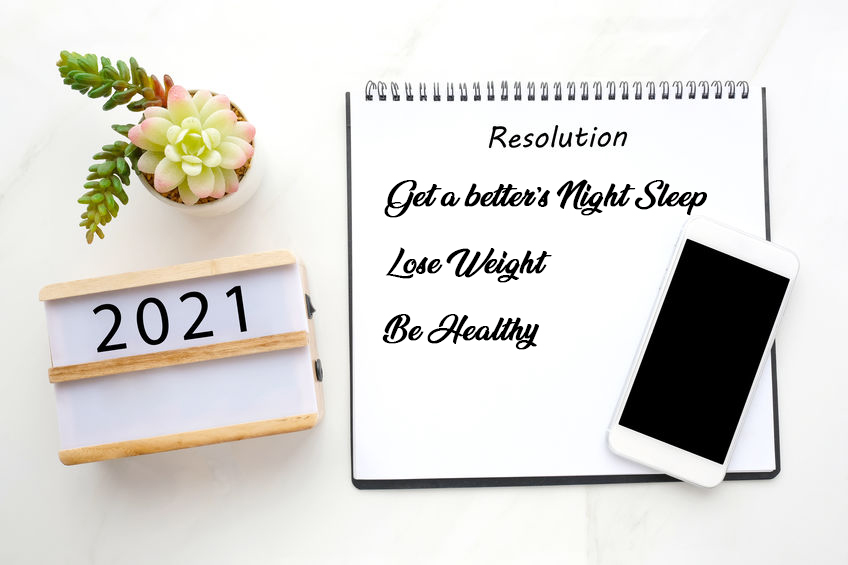
Interestingly, in 2020, 30% of American made the resolution to get more sleep. So why should a better night’s sleep be part of your new year’s goals? As stated in our previous blog , “sleep affects restoration of every type of tissue and system in your body, from the brain, heart, and lungs to metabolism, immune function, mood, and disease resistance.” Therefore, with a consistent schedule of quality and sufficient sleep we see the following benefits:
- Sleep can boost your immune system, thus helping you fight colds, the flu or make vaccines more effective.
- Sleep can prevent weight gain. Why? A lack of sleep produces a hormone, Ghrelin, which boosts appetite, and decreases the hormone, Leptin, which sends signals that you are full.
- Sleep can improve heart health, decrease blood pressure and prevent the release of cortisol, which is a stress hormone and bad for your heart.
- Sleep improves your mood as you have more patience, more energy and better able to face life’s challenges.
- Sleep improves cognitive functions, which results in higher productivity, improved concentration and less mistakes.
- Sleep can save your life, literally. A study published by the AAA Foundation for Traffic Safety says you’re twice as likely to be involved in a car accident with less than 8 hours of sleep, and in less than 5 hours, your risk quadruples.
- Sleep improves exercise performance. With more sleep, you have more energy to begin and complete your workout but you also have better hand-eye coordination, reaction time and muscle recovery.
- Sleep Improves your memory. While you are in deep sleep, your brain is processing and consolidating your memories from the day.
So, as you can see, nearly all other resolutions can be accomplished just by getting a better night’s sleep. When you are well rested, you could lose weight, reduce stress, be more productive, have more energy, be healthier and be happier. All these benefits have positive repercussions in our work life, home life and relationships with friends and family.
Losing Weight May Translate into Better Sleep
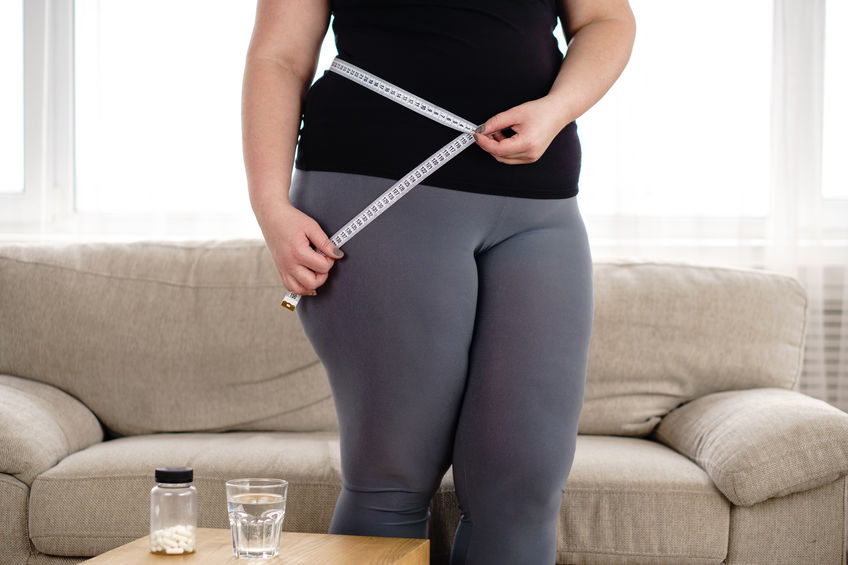
Losing weight is one of the most popular resolutions in years’ past and weight loss can be impacted by a better night’s sleep and a better night’s sleep can impact weight loss. How and why?
In regards to the relationship between obesity andd Obstructive Sleep Apnea, the cause-and-effect can be compared to the chicken and the egg … which came first? As stated above a lack of sleep increases Ghrelin, which boosts appetite, and decreases the hormone, Leptin, so those with sleep apnea can be prone to weight gain.
Sleep Apnea can lead to Obesity
Studies show that improving sleep quality with the assistance of CPAP, can facilitate your weight loss goals, because when you have a good nights’ sleep you are less prone to snacking and mindless eating.
“Obese adults with obstructive sleep apnea who follow a calorie-restricted diet can lose more weight if they also use a CPAP machine, according to a 2019 study. ‘CPAP can actually facilitate weight loss,’ says study leader Yuanjie Mao, MD, an endocrinology fellow at the University of Arkansas for Medical Sciences in Little Rock.” –
WebMD.com
Obesity is a risk factor for Sleep Apnea
“Obesity greatly increases the risk of sleep apnea. Fat deposits around your upper airway can obstruct your breathing.”
– MayoClinic.org
One of the primary risk factors of Sleep Apnea is obesity and being overweight. Thus, weight loss had been shown to improve symptoms of obstructive sleep loss because weight loss can reduce the pressure on your airways.
“With few exceptions, weight loss may be an effective therapy, especially in overweight and obese patients, who may comprise > 70% of subjects with OSA. Weight loss, especially through bariatric surgery, has been shown to reduce the severity and symptoms of OSA and sometimes, though not always, result in its complete resolution. In addition, weight loss may elicit beneficial changes in cholesterol, insulin resistance, leptin, inflammatory markers, and endothelial function, abnormalities that are not only associated with OSA but also with obesity, experimental sleep deprivation, and self-reported short sleep.”
– National Institutes of Health
Losing Weight is always a Good Idea, if Obese or Overweight
If you are overweight or obese, you will see a host of benefits, physically, mentally and emotionally by losing even a few pounds by making healthy choices (diet, exercise and caloric restriction). See our chart below to determine your Body Mass Index. If inclined to lose weight, please see advice from your physician or primary care doctor to determine the best weigh loss methods for your particular age, ability and health concerns.
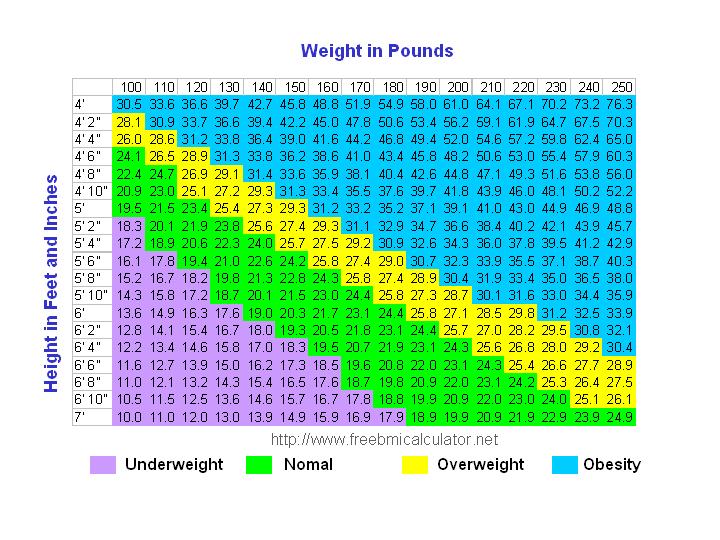
Sleep Hygiene Contributes to a Better Night’s Sleep
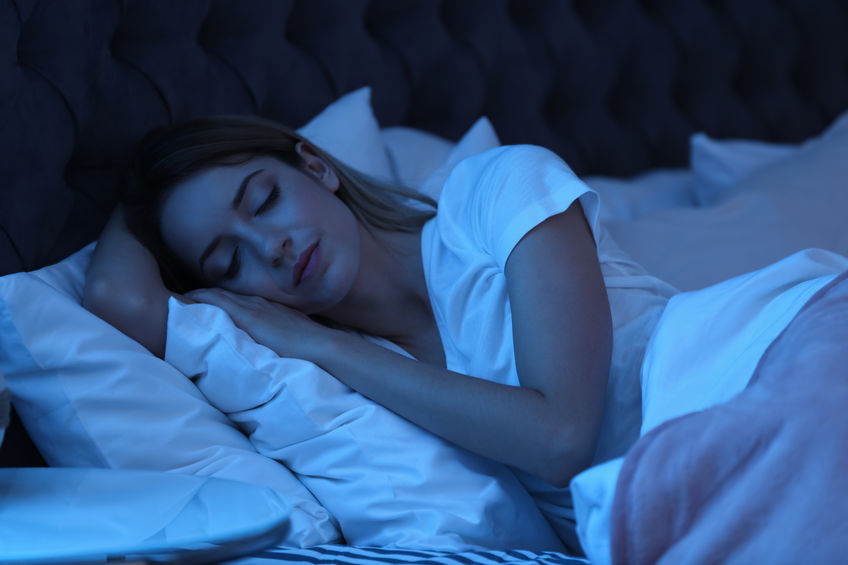
What is Sleep Hygiene? Sleep hygiene is a combination of behavioral and environmental practices and habits that promote consistent, uninterrupted sleep. Some types of insomnia may be reinforced by bad habits regarding our bedtime routines. So, with some simple modifications, you can improve the quality of your sleep.
- Maintain a consistent schedule of bedtime and wake time. Keeping a consistent routine helps your body recognize that it’s bedtime and can help you fall asleep faster.
- Reduce screen time before bedtime. The blue light emitted by your cell phone or laptop screen restrains the production of melatonin, the hormone that controls your sleep-wake cycle (aka circadian rhythm).
- Set an optimal sleep-time temperature. Most doctors recommend keeping the thermostat set between 60 to 67 degrees Fahrenheit (15.6 to 19.4 degrees Celsius) for the most comfortable sleep.
- Avoid eating large meals before bed. A general recommendation is to stop eating about two hours before bed to give your body time to digest and work off some of that energy.
- Reduce alcohol intake before bed, as alcoholic drinks can reduce REM sleep and increase sleep disruptions.
- Avoid caffeine and caffeinated beverages at least four to six hours before your bedtime. Caffeine (which can be found in coffee, soda, iced tea, green, black and some herbal teas, chocolate and some over-the-counter medications), is a stimulant and can interrupt your sleep cycles.
- If you have been diagnosed with OSA, then nightly use of your CPAP Therapy should be added to your Sleep Hygiene regimen.
CPAP Therapy Contributes to Better Sleep for those with OSA
Regardless of the BMI Index and weight class of patients with OSA, it’s proven that CPAP Therapy improves and effectively treats the symptoms of OSA.
“The gold-standard treatment for sleep apnea is the CPAP machine. If you can wear it, it’s 100% effective. If you can sleep with a CPAP machine, it can provide a 100% correction,” –
– Dr. Katherine Green, an expert on sleep apnea and medical director of the Sleep Medicine Clinic at University of Colorado Hospital, UChealth.org
With that in mind, there are a host of variables when it comes to the success of a patient’s CPAP therapy including equipment type and settings:
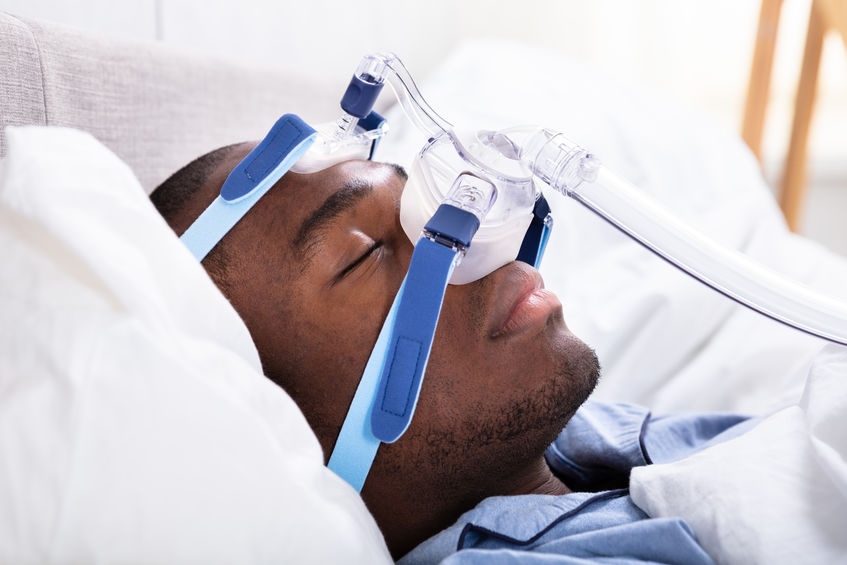
- CPAP Machines (CPAP, BiPAP, ASV, APAP, ASV),
- CPAP Masks (Full Face, Nasal, Nasal Pillow), and then
- Pressure settings for inhalation and exhalation, which are prescribed by your sleep specialist or physician.
- Mask Fitting and Training because even the best equipment can result in failed treatments if proper fitting and training is not administered to the patient.
There is also a wide range of levels of severity when it comes to a patient’s OSA symptoms, and this is measured by Apnea Hypopnea Index (AHI) and Oxygen Desaturation.
The AHI is the number of apneas (or interrupted air flow) recorded during the study per hour of sleep. It is generally expressed as the number of events per hour. Based on the AHI, the severity of OSA is classified as follows:
- None/Minimal: AHI of 0 to 5 per hour
- Mild: AHI of 5 to 15 per hour
- Moderate: AHI of 15 to 30
- Severe: AHI of over 30
Oxygen Desaturation are measured by reductions in blood oxygen levels (desaturation) are recorded during a sleep study. The levels of severity of desaturation are classified as follows:
- Normal blood oxygen level (saturation): 96 – 97%
- Mild blood oxygen level: 90 – 95%
- Moderate blood oxygen level: 80 – 89%
- Severe blood oxygen level: below 80%
In our next blog, we will discuss all of these variables in greater detail and answer the following questions.
- What are the five types of CPAP Therapy machines and what is the right machine for you?
- How can CPAP therapy be modified to treat patients with mild to severe OSA symptoms?
- How imperative is finding a sleep specialist or a physician well-versed in sleep medicine to the success of your accurate diagnosis and effective treatment?
The staff at Everything CPAP wishes everyone a happy and healthy 2021, and we wish all of our patients a good night’s sleep! As in years’ past, our vision for 2021 remains the same: to serve the people of the greater southwest Idaho region with a comprehensive approach to sleep apnea care through the integration of education, instruction, clinical research, excellence in follow up, and a personalized approach to treatment. Get started today!







